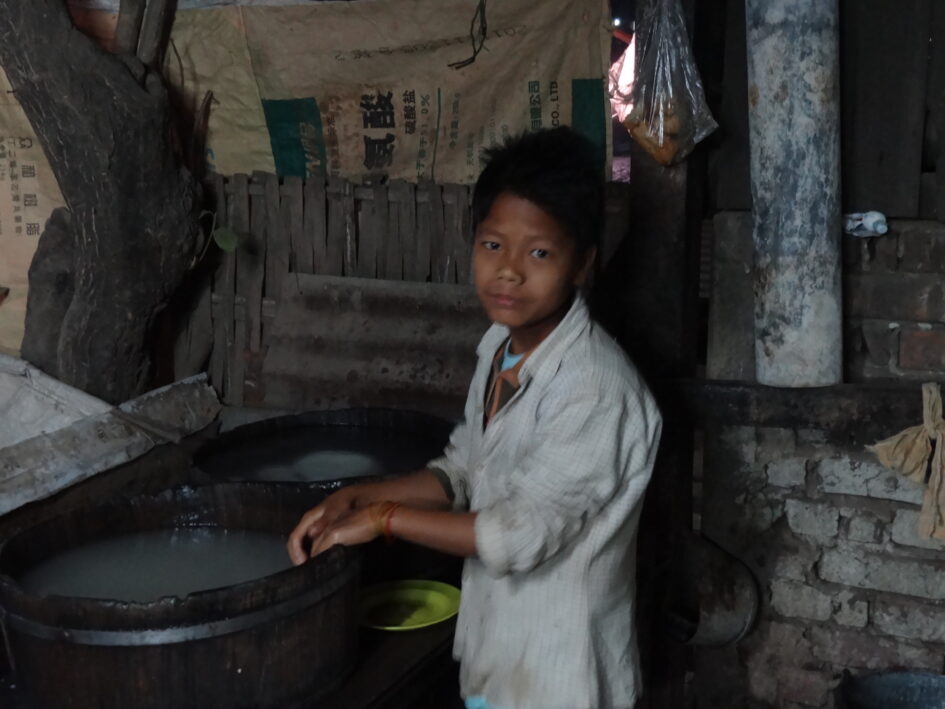For three years, I dreamed of traveling to Myanmar—a country that draws visitors not only with its magnificent Buddhist temples but also with the warmth of its people, where tourists are not yet seen simply as “walking ATMs.” I’m fascinated by Myanmar’s rich history, stretching back to the earliest city-states of the 2nd century AD, and the fact that for centuries it was a stage for powerful dynasties, wars, and colonial influences. The lack of a Myanmar embassy in Poland complicated my travel plans from the start. My options were either the costly and time-consuming process of obtaining a visa in Berlin or applying for a visa in Bangkok. The latter required several days of waiting, which, on a three-week holiday, meant cutting my stay in Myanmar to just two weeks—definitely not enough for such a fascinating country.

In the end, I obtained my visa in Phnom Penh. The process took four days, and soon a visa with my photo appeared in my passport! I easily bought a ticket online from Bangkok to Yangon—all that was left was to board the plane and begin the adventure of a lifetime.
Myanmar – A Land of History, Temples, and Remarkable People
Myanmar, formerly Burma, is a place where history and culture intertwine at every step. For centuries, it was home to powerful dynasties—from the Pagan kingdom, which unified Burmese lands and adopted Theravada Buddhism in the 11th century, to the Toungoo dynasty, which built the largest empire in Southeast Asian history, and on to the colonial era under British rule. Every era has left its mark: monumental pagodas, palace ruins, traditions, and customs.
Myanmar is renowned for the extraordinary hospitality of its people. Traditional values of respect are still present in daily life: young people give up their seats to elders, and it’s customary to remove shoes before entering temples and homes. Greetings involve a bow with hands at the stomach, and conversations with adults use proper titles. The country is home to 135 officially recognized ethnic groups, each contributing to Myanmar’s culture and cuisine.
On the streets and markets, you’ll see men and women in traditional longyi—colorful sarongs—and many women and children with faces covered in yellowish thanaka powder, used for over 2,000 years as a natural cosmetic and sun protection. Be sure to try local specialties like tea leaf salad or the noodle dish nangyi thoke.

Myanmar is also a land of festivals. The most famous is Thingyan—the Burmese New Year, celebrated as a water festival when entire cities become arenas of joyful water fights. In the Kachin region, the colorful Manaw festival takes place, while Bagan hosts the religious Ananda Pagoda Festival.
It’s worth knowing that Myanmar remains one of the world’s most Buddhist countries—89% of the population practices Theravada Buddhism, and thousands of temples and monasteries shape not just the landscape but daily life as well. Bagan, Mandalay, and Yangon are true treasure troves of spirituality and architecture. A fun fact: on Inle Lake, fishermen row with one leg—a unique technique found only here.
Myanmar is a country of contrasts: the modern capital Naypyidaw with its wide, empty highways, colonial buildings in Yangon, and nearby villages where time seems to pass more slowly and tradition is still alive. Despite a turbulent history and political upheavals, it’s a place that fascinates and leaves a lasting impression.

My Burmese adventure is just beginning. Ahead of me lies a country full of mysteries, smiles, and extraordinary stories. If you dream of a journey that will take you back in time and let you discover authentic Asia—Myanmar is a place you must see with your own eyes.

Leave a Reply